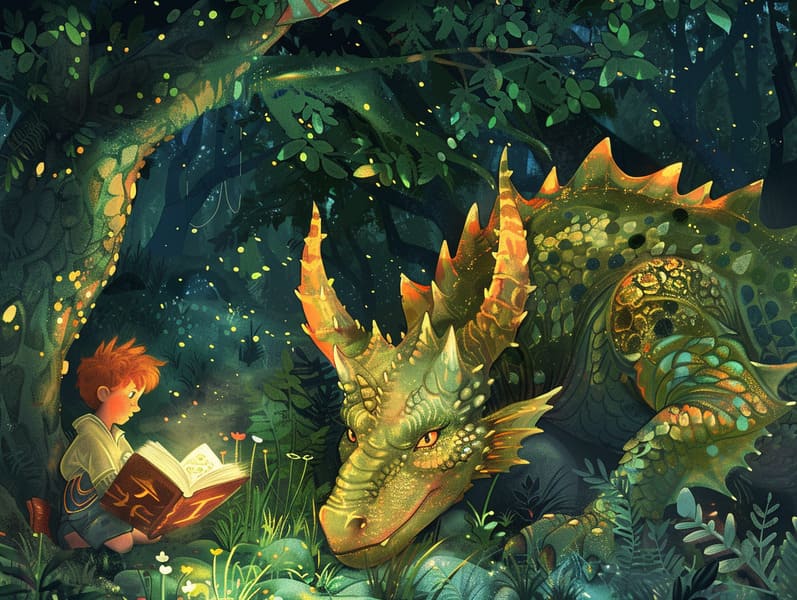The Evolution of Ancient Fairy Tales with the Enduring Spell.
The Evolution of Ancient Fairy Tales with the Enduring Spell.
Blog Article

Children's fairy tales have long histories. These tales have been shared from one generation to the next long before they were ever documented. They sprang from a variety of civilizations, including Asian traditions. They were initially told among older generations, often carrying themes and messages mirroring the societal norms and beliefs of the time.
The renowned Brothers Grimm, the two Grimm brothers, were among the first to assemble many of these beloved narratives. Their anthology, "Grimm's Folk Tales," included tales like "Ashenputtel," "Hansel and Grethel," and "Snow-White and Rose-Red," which have since become staples in the world of children's fairy tales. Similarly, Hans Andersen's whimsical tales, such as "The Sea Maid," and "The Story of the Ugly Duckling," have captured hearts worldwide, establishing their place in the pantheon of classic fairy tales.
Despite their ancient origins, classic fairy tales remain as impactful as ever, especially as bedtime stories for kids. These charming stories are now available in numerous formats, including gorgeously illustrated books, charming animations, and online storybooks.
Their enduring popularity can be traced to several charming aspects:
Life Lessons: Timeless fairy tales often offer important moral lessons. Fairy tales like "The Boy Who Cried Wolf" teach the significance of honesty, while "The Hare and the Tortoise" highlight the qualities of steadfastness and unassuming nature. These narratives offer the young clear distinctions between ethical and unethical, molding their moral compass in a kind yet deep way.
Compassion and Insight: Traditional fairy tales frequently depict heroines facing difficulties and adversities, stimulating audiences to connect with their struggles and champion their triumphs. For instance, "The Tale of Beauty and the Beast" demonstrates the merit of valuing inner qualities to acknowledge the true character of a soul, enhancing awareness and understanding.
Cultural Knowledge: Many classic fairy tales are rooted in the cultural contexts from which they sprang. Delving into these narratives can provide illuminating insights into different cultures, promoting a sense of world insight and understanding.
Inventiveness and Imagination: The mythical elements in old fairy tales—talking beasts—provoke children’s visions. These narratives guide readers to fantastical realms, invigorating imaginative thinking and a sense of fascination that stays a lifetime.
Timeless fairy tales are not only magical but also informative. They serve as charming tools in advancing various brain and heart skills in young ones. When timeless fairy tales are narrated, they strengthen language development by introducing new language and complicated sentence structures. This practice also advances auditory skills and attention, as little ones follow the story, anxious to see what happens next.
Furthermore, exploring the themes and characters of fairy tales can sharpen reasoning skills and intellectual skills. Children are guided to find patterns, predict happenings, and know cause and effect. These analyses also aid young readers voice their thoughts and feelings, adding to their emotional intelligence.
In today’s technological age, the abundance of online fairy tales has made these fairy tales more acquirable than ever. Digital sites and mobile apps make available broad selections of Grimm's fairy tales that can be read or listened through anytime, anywhere. Fairy tales recited are particularly well-received, supplying an engaging way for kids to appreciate these charming tales. Spoken stories and read-aloud videos lead characters and settings to life, often supplemented by delightful background sounds and tunes that enrich the storytelling experience.
The persistent attraction of ancient fairy tales lies in their ability to evolve to present days while holding onto their key morals. Contemporary renditions of these fairy tales often show more different protagonists and modern settings, making them pertinent to today’s audience. However, the central morals of boldness, generosity, and honesty remain unchanged, continuing to resonate with young readers of all ages.
Fairy tales also offer a sense of reassurance and knowability. They provide a coherent narrative check it out with a apparent beginning, middle, and end, often coming to a close with the termination of conflicts and the triumph of good over evil. This constancy can be placating for little ones, affording a sense of sturdiness in an inconstant world.
Ancient fairy tales continue to captivate and educate new generations, maintaining their elegance and value in modern society. As nighttime stories for kids, they deliver up a perfect blend of charm and understanding, supporting moral values, empathy, and creativity. The proliferation of free fairy tales online and the favor of fairy tales read out loud validate that these old tales remain reachable to new generations.
By upholding and recounting these fairy tales, we continue to recognize the rich tapestry of fantasy and cultural heritage. Whether you are delving into a vibrantly illustrated book, perusing a digital collection, or listening via an audio story, the majesty of traditional fairy tales is always within reach. These narratives demonstrate of the unending force of stories and its ability to tie us across generations and cultures.
Be it you are browsing a gorgeously illustrated book, enjoying a electronic collection, or listening through an spoken story, the splendor of famous fairy tales is always within reach.
These narratives show us of the undying impact of storytelling and its ability to hold us together across time and space, creating a bond that delights and instructs alike.